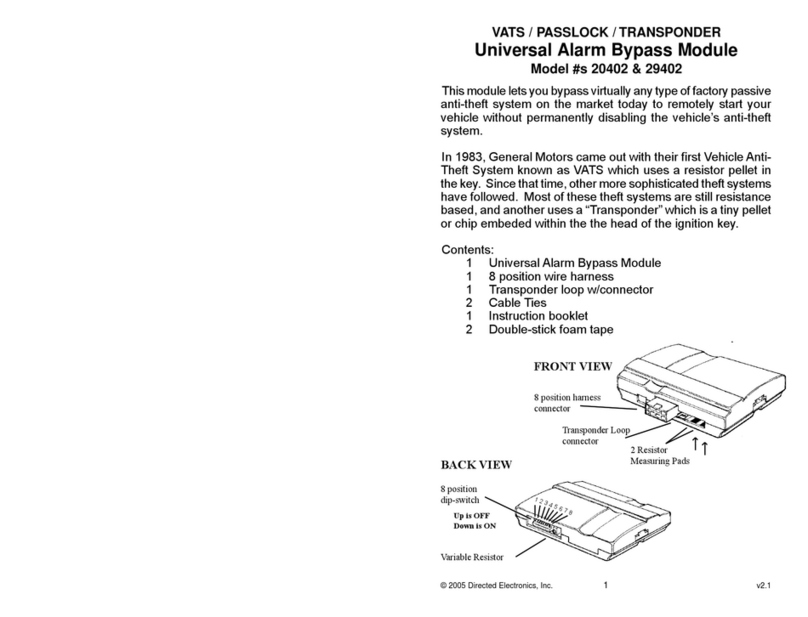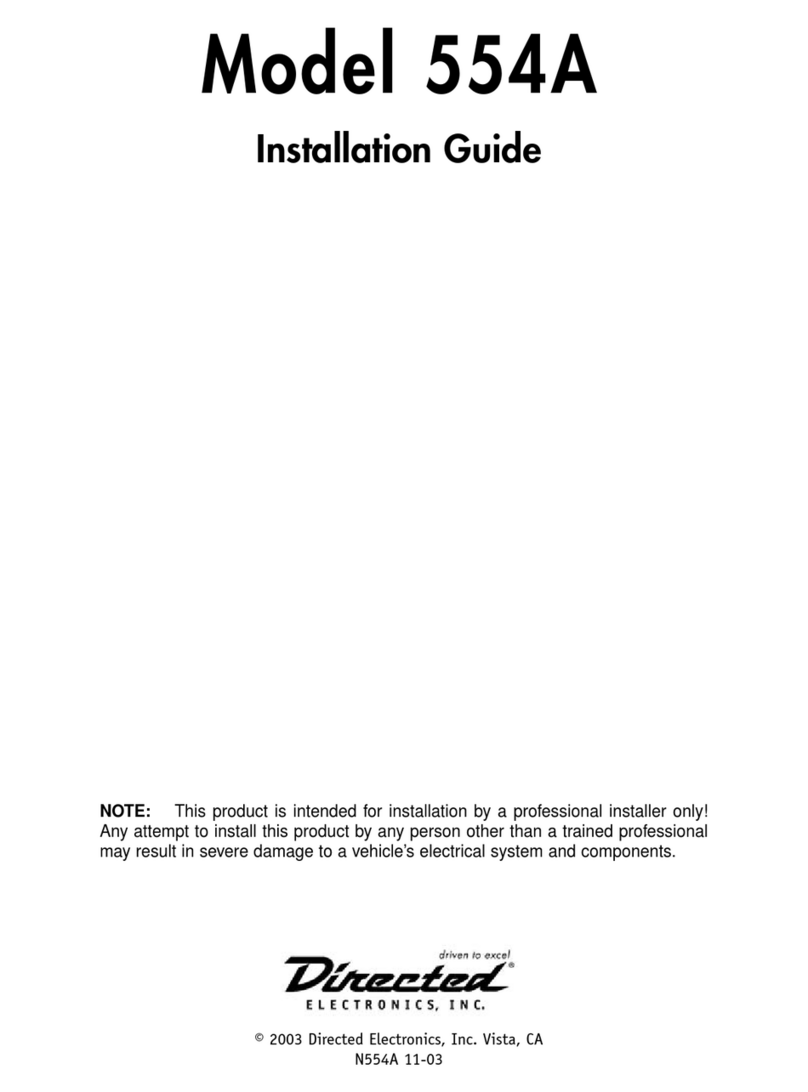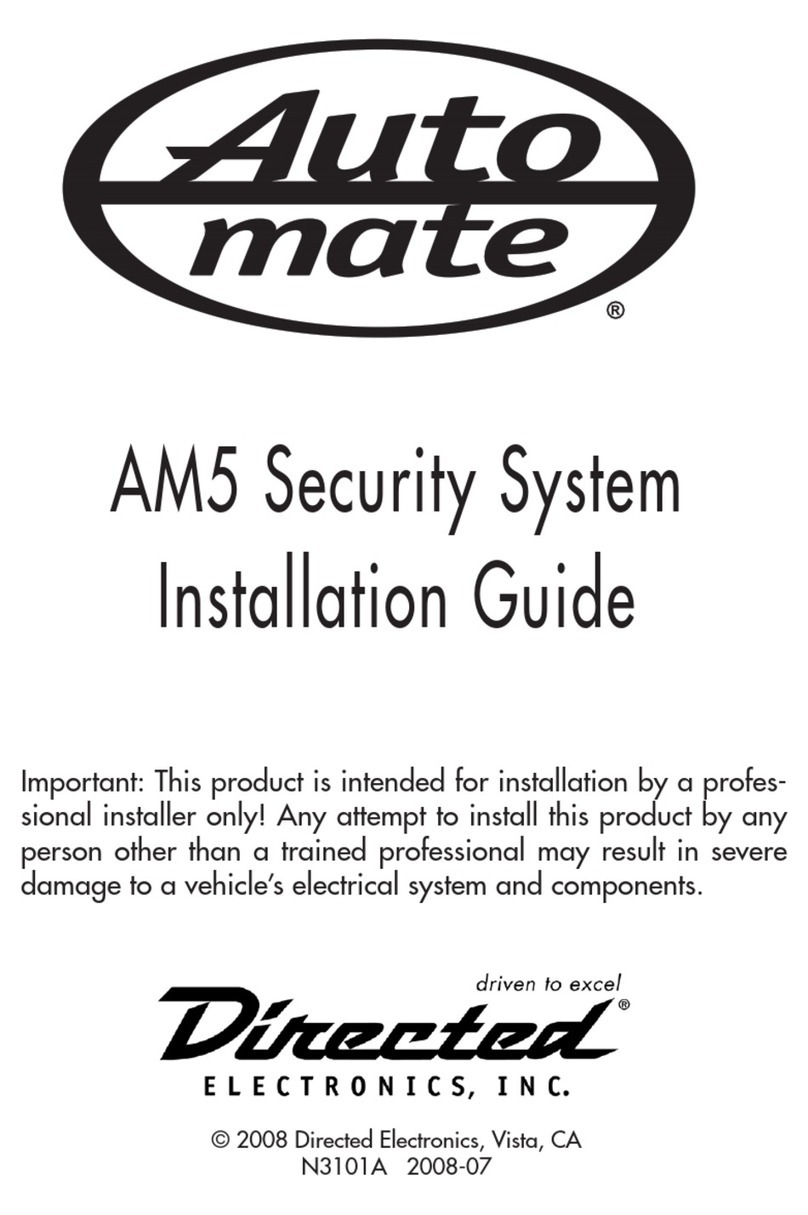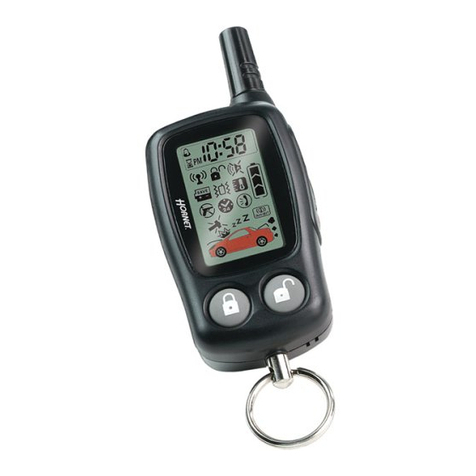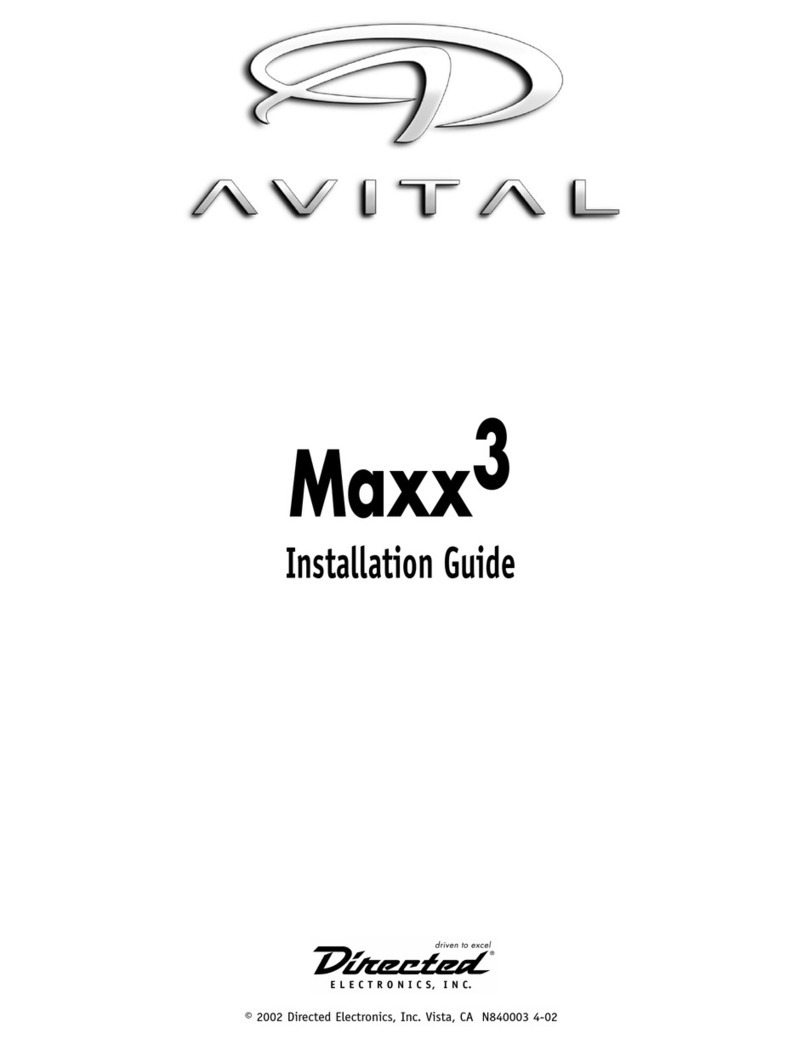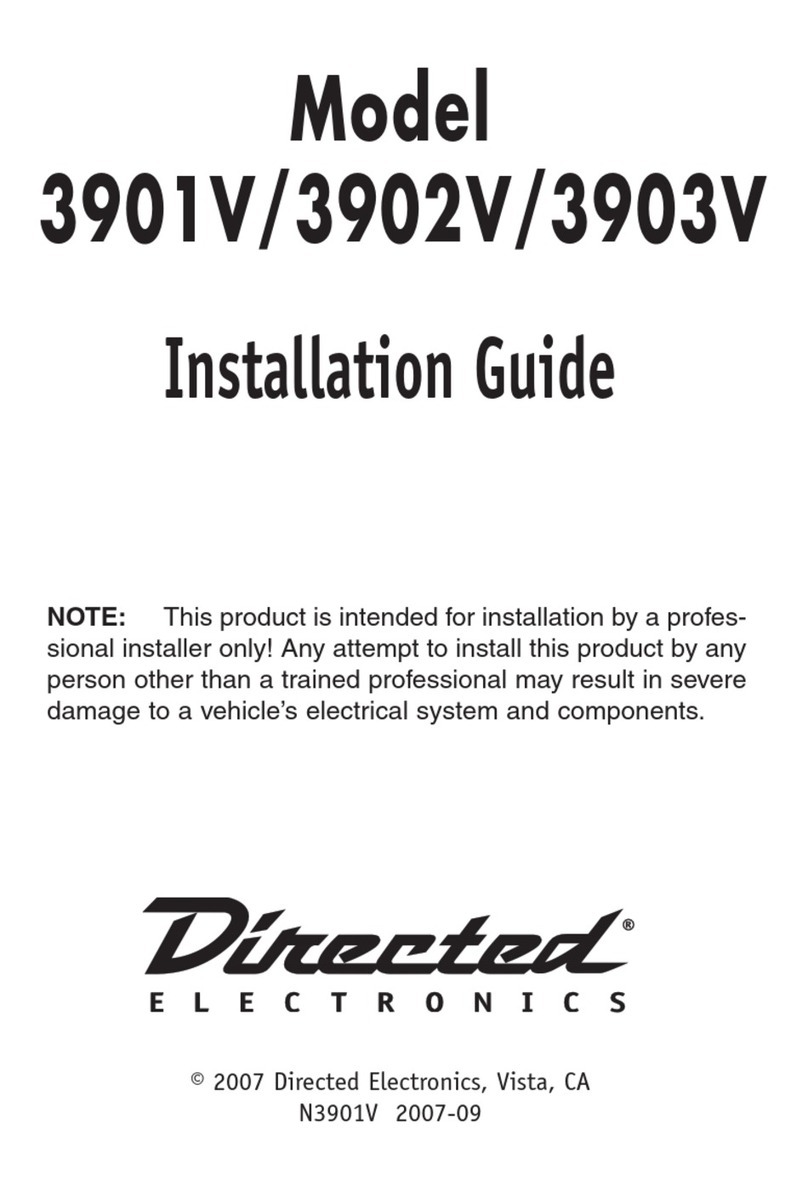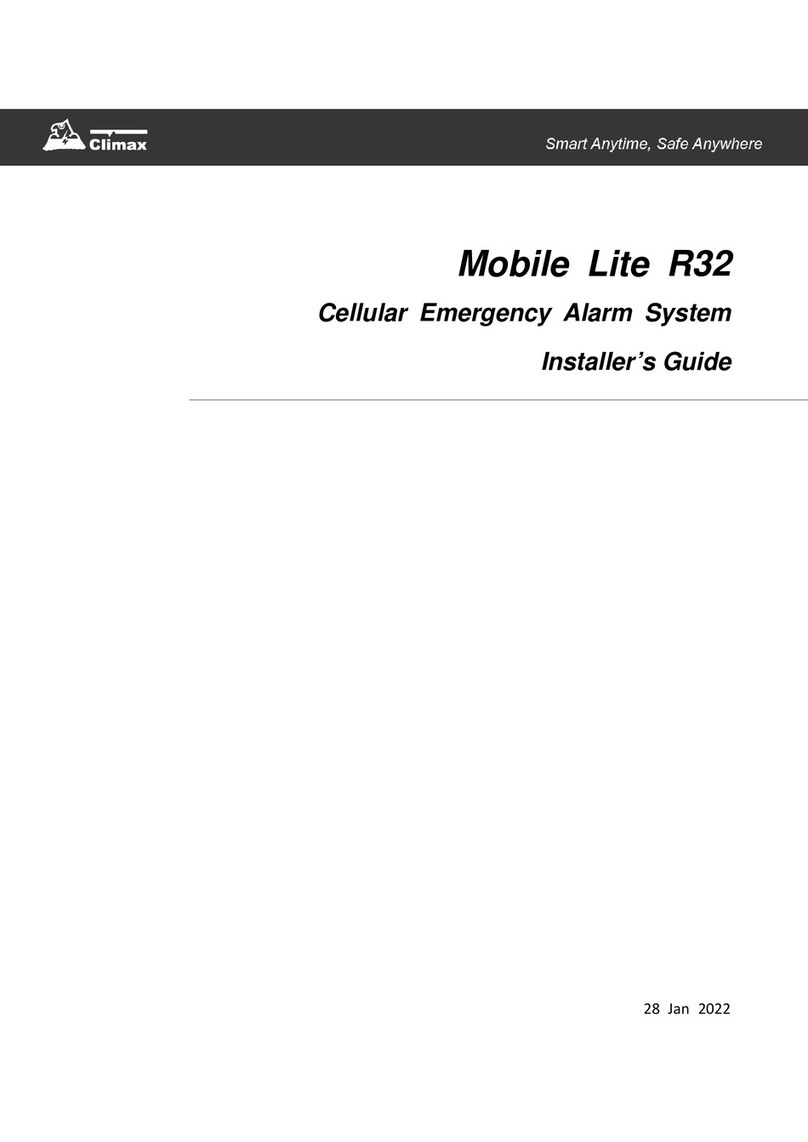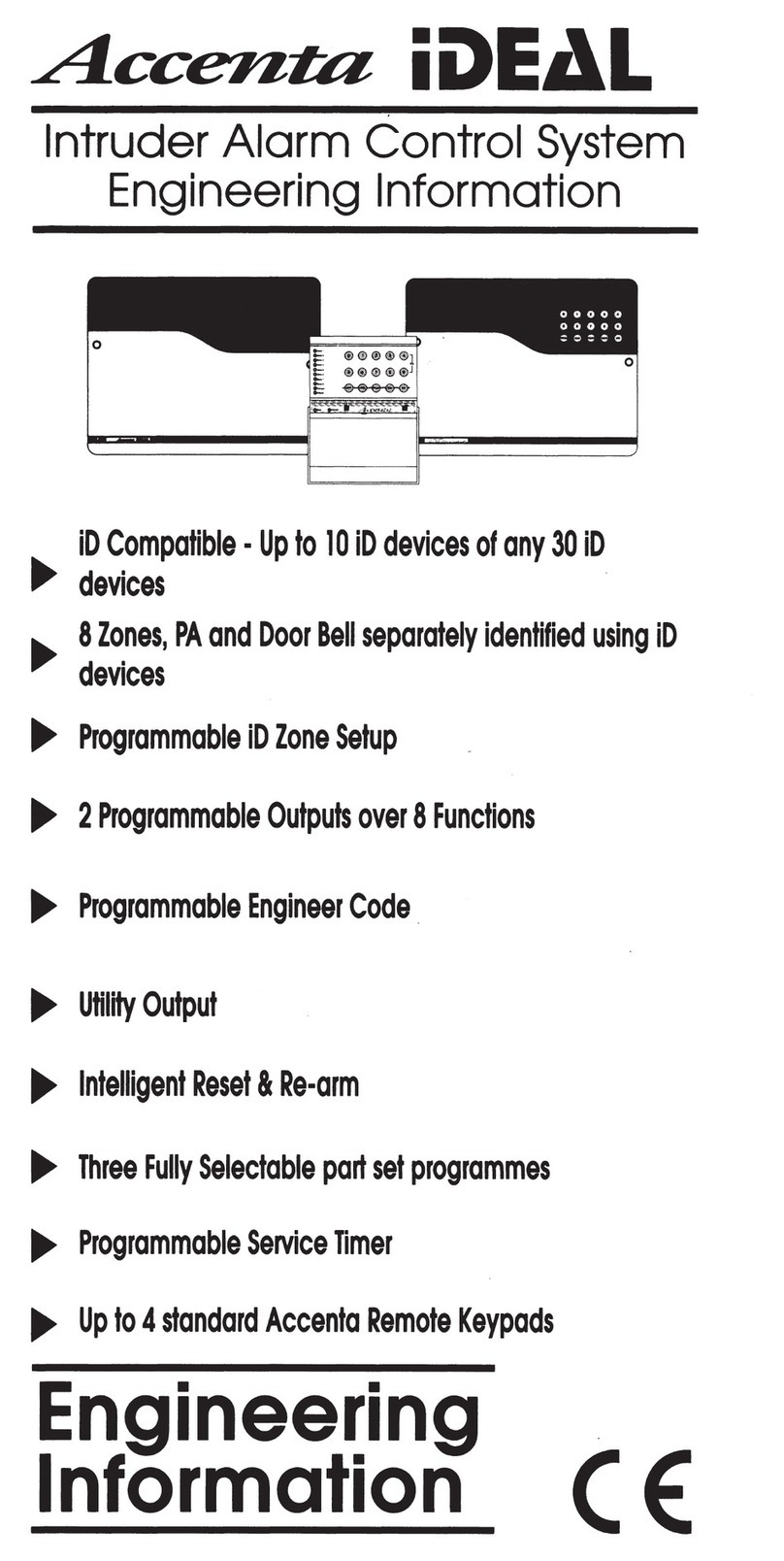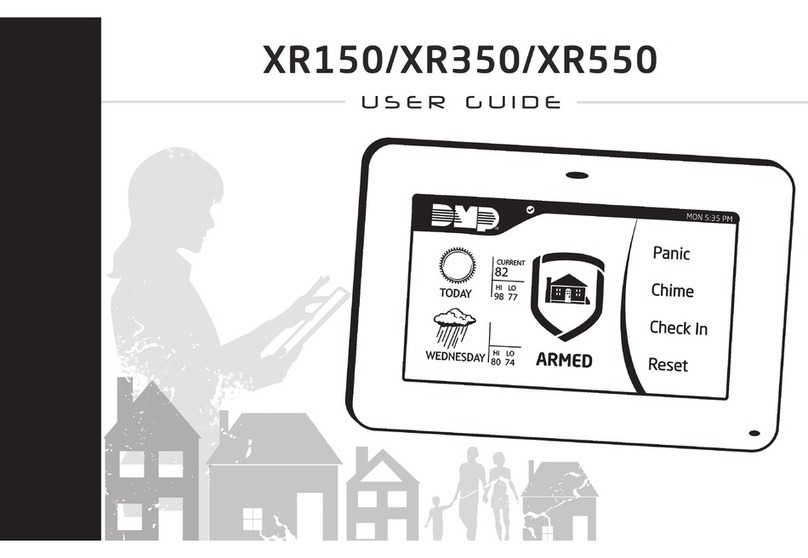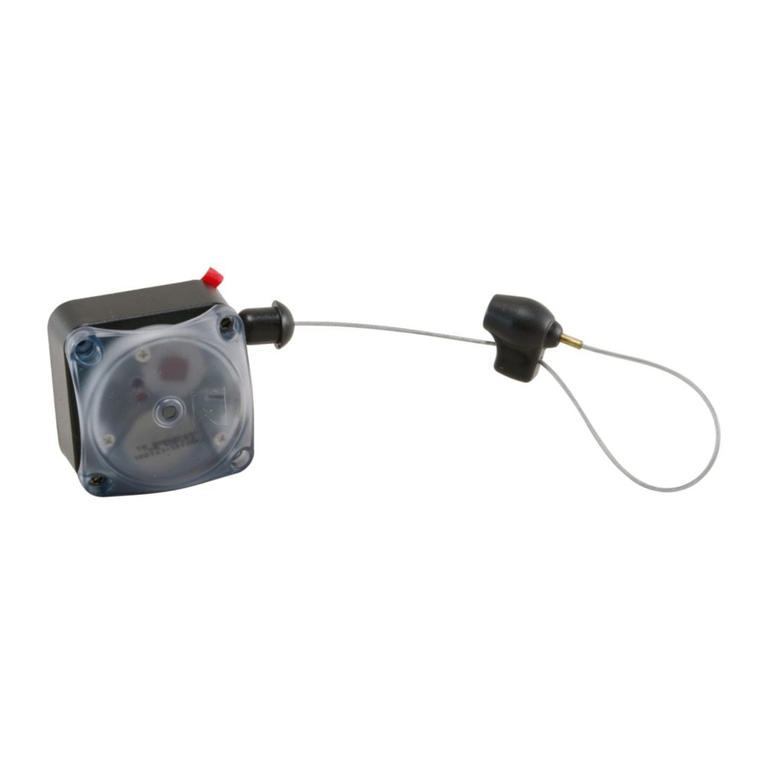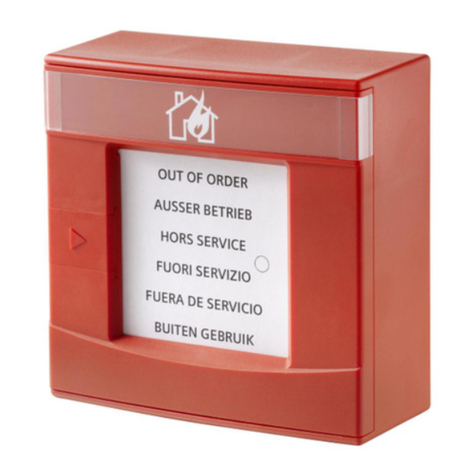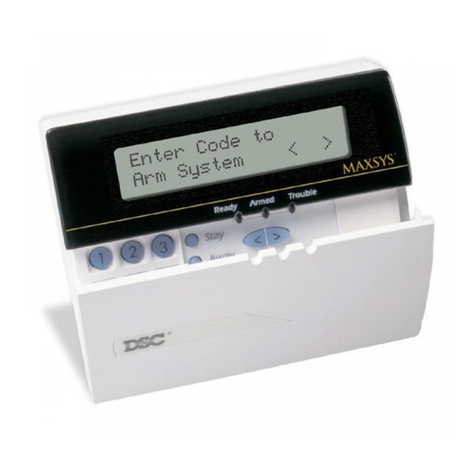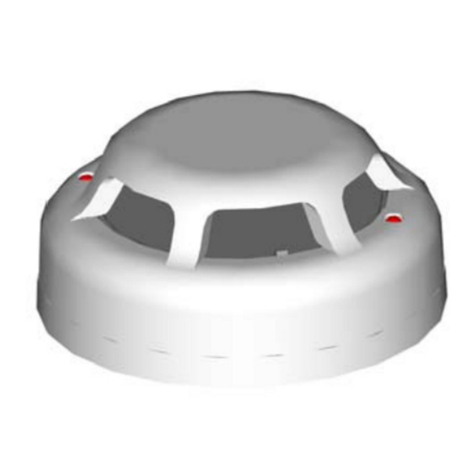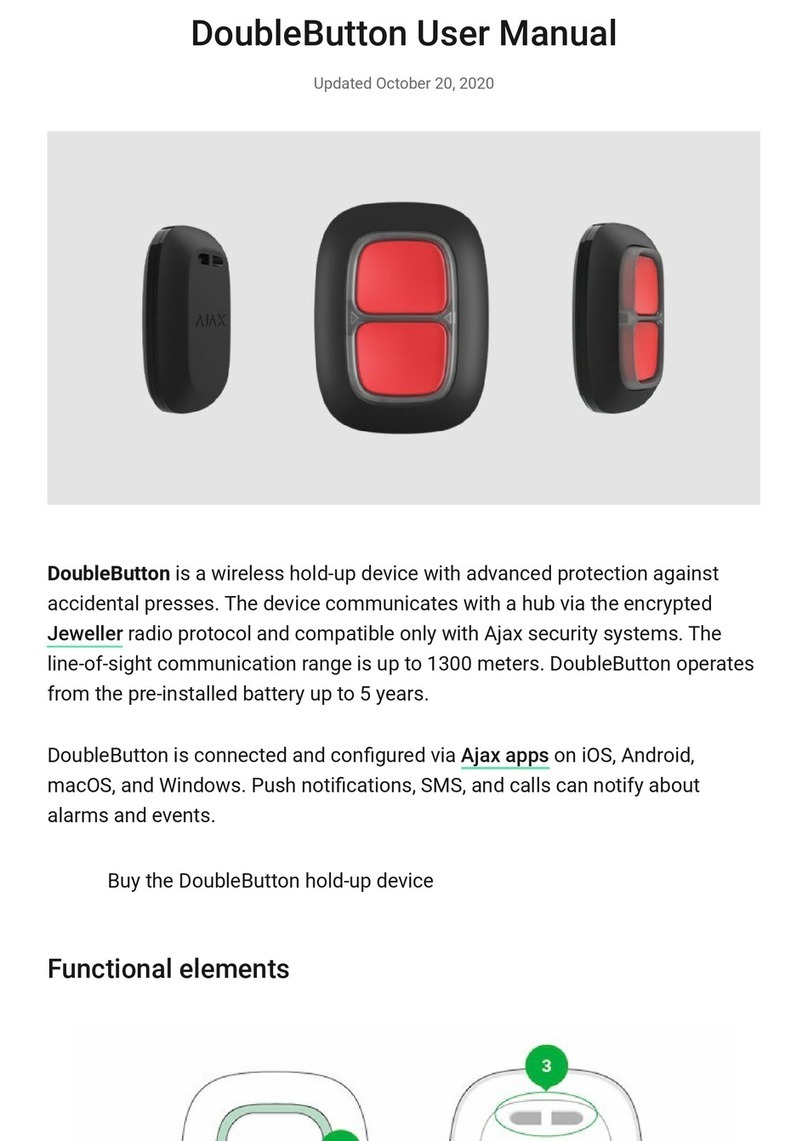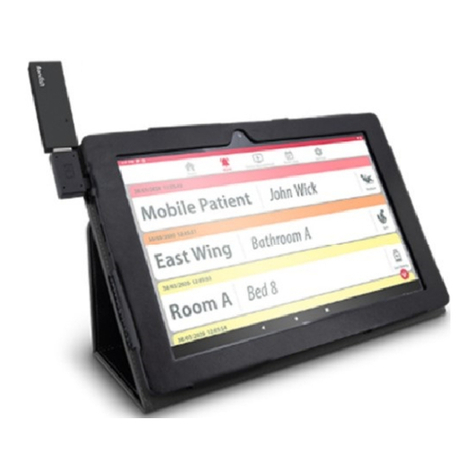
7
© 2012 Directed. All rights reserved.
WHITE PARKING LIGHT OUTPUT
This wire should be connected to the parking light wire in the vehicle. See setting the light flash polarity sec-
tion of this guide for polarity settings.
Note: For parking light circuits that draw 10 amps or more, the internal jumper must be switched to a (-)
light flash output. (See setting the light flash polarity section of this guide.) P/N 8617 or a standard automo-
tive SPDT relay must be used on the light flash output wire.
[Required connection for both configurations]
YELLOW (+) IGNITION INPUT
Connect this wire to the (+)12V ignition wire. This wire must show (+)12V with the key in Run position and
during cranking. Take care to insure that this wire cannot be shorted to the vehicle chassis at any point.
[Required connection for both configurations]
RED/WHITE (-) 200mA TRUNK RELEASE OUTPUT
When the system receives the code controlling trunk release, for longer than 1.5 seconds, the RED/WHITE
wire will supply an output as long as the transmission continues (up to 25 seconds max). This is often used
to operate a trunk/hatch release or other relay-driven function.
Important! This output is only intended to drive a relay. It cannot be connected directly to a high current
device
[Optional connection for both configurations]
BROWN (-) 200mA HORN OUTPUT
This wire supplies a (-) 200 mA output that can be used to honk the vehicle horn or it can be connected to
the (-) input of an optional siren.. It outputs a single pulse when locking the doors with the remote, and two
pulses when unlocking with the remote. This wire also outputs pulses for 30 seconds when Panic Mode is
activated. If the vehicle has a (+) horn circuit P/N 8617 or a standard automotive SPDT relay must be used
on the horn output wire.
NOTE: This wire can be programmed as a siren output see features programming.
[Required connection for both configurations]
ORANGE (-) 500mA GROUND WHEN ARMED OUTPUT
This wire supplies a (-) 500 mA ground as long as the system is armed. This output ceases as soon as the
system is disarmed. The GWA can be hooked up to an optional starter kill relay, a voice module or any ac-
cessory that requires a ground when armed.
NOTE: If an optional remote start is added to the system, this wire will act as an anti-grind output.
[Optional connection for both configurations]
VIOLET (+) DOOR TRIGGER INPUT
This wire is used in vehicles that have a positive (+) switched dome light circuit. Connect the violet wire to a
wire that shows (+) 12V when any door is opened, and ground when the door is closed. [Required connec-
tion for both configurations but not required if the vehicle has a (-) door trigger circuit]
GREEN (-) DOOR TRIGGER INPUT
This wire is used in vehicles that have a negative (-) switched dome light circuit. Connect the green wire to a
wire that shows (-) when any door is opened, and (+)12V when the door is closed. [Required connection for
both configurations but not required if the vehicle has a (+) door trigger circuit]
